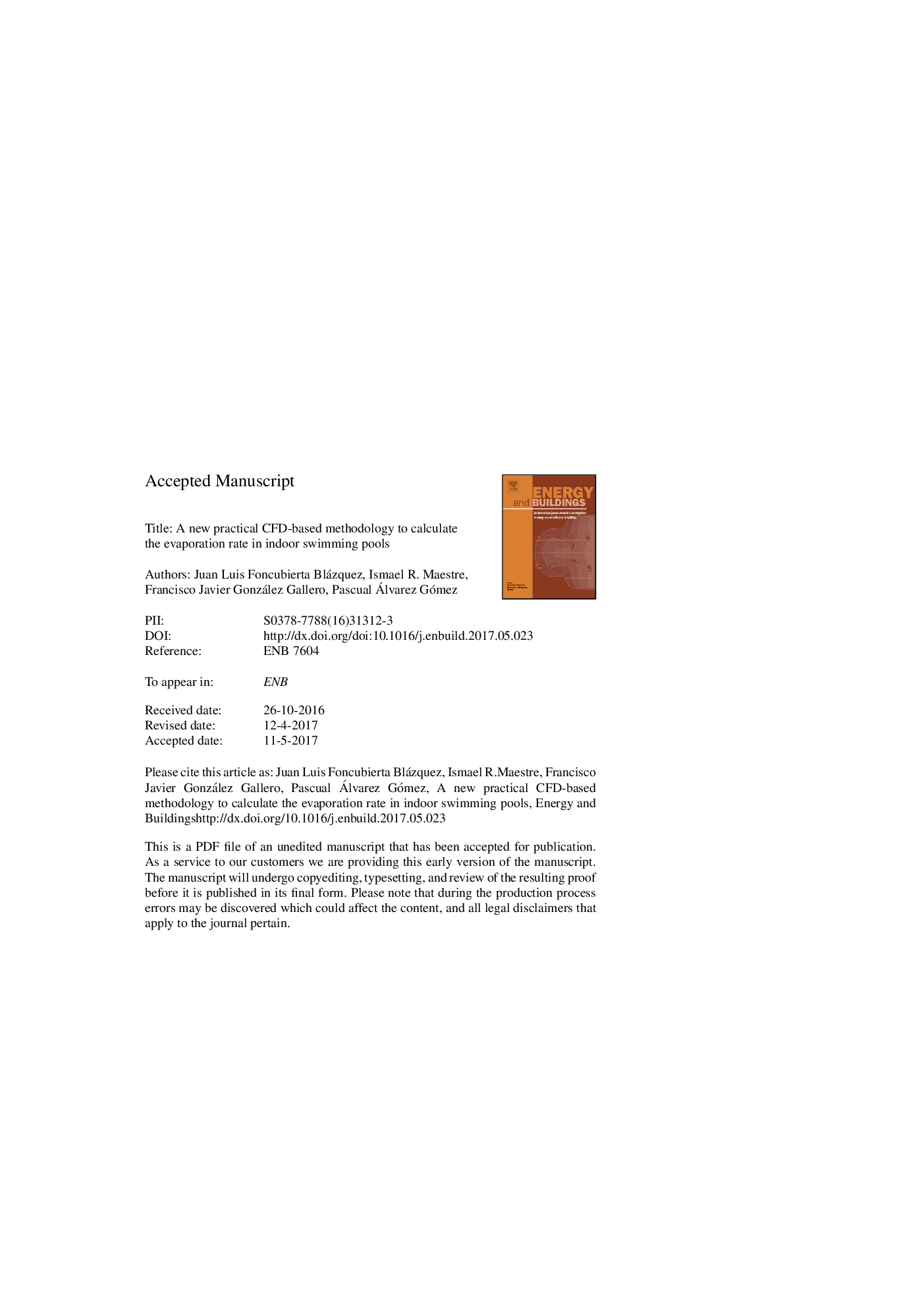| Article ID | Journal | Published Year | Pages | File Type |
|---|---|---|---|---|
| 4919105 | Energy and Buildings | 2017 | 26 Pages |
Abstract
This paper presents a new methodology in which a computational fluid dynamics model is applied to estimate water evaporation rate in indoor swimming pools. This rate is needed to achieve a suitable energy performance of ventilation and dehumidification systems. The main hypotheses of the model set the following boundary conditions at the air-water interface: air temperature equal to water temperature, water vapour concentration equal to saturation humidity of air at water temperature and free slip wall condition (no shear stress). This last condition can be justified by the fact that Prandtl and Schmidt turbulent numbers are usually less than one in this kind of flows. Consequently, the dynamic boundary layer depth will be smaller than the thickness of the thermal and humidity boundary layers. The model was experimentally validated by using data from three different test chambers and from a real swimming-pool. A total of 233 different flow conditions were simulated. The results were quite satisfactory, with a relative error of only 3% in the simulations of the real swimming-pool and a total average relative error smaller than 9%.
Keywords
Related Topics
Physical Sciences and Engineering
Energy
Renewable Energy, Sustainability and the Environment
Authors
Juan Luis Foncubierta Blázquez, Ismael R. Maestre, Francisco Javier González Gallero, Pascual Álvarez Gómez,
